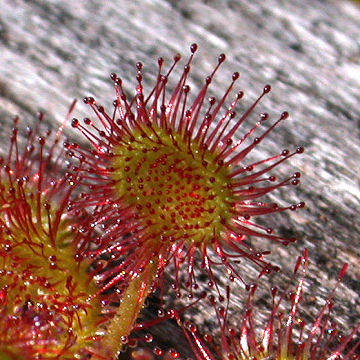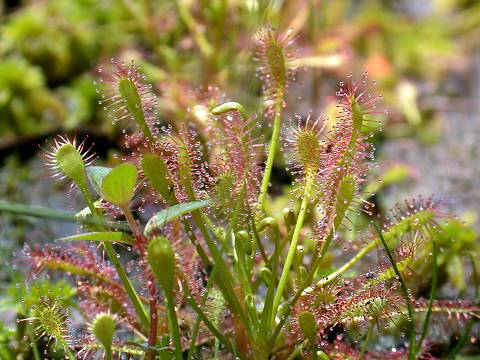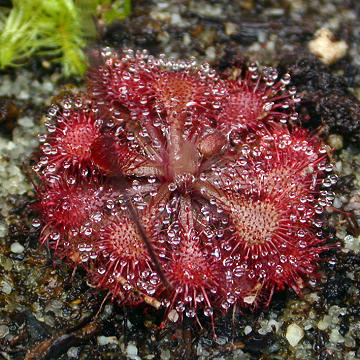Eastern North America has a few endemic sundews (Drosera spp.), all of which occur in acid habitats like bogs. The most common in New York State is the round-leaved sundew (Drosera rotundifolia). It has round leaves (obviously!) that are covered with stiff glandular hairs each tipped with a sticky drop of “dew”. The leaves are often a bright red which serves to attract insects, and the sticky glands trap the insects. After capturing an insect the leaf usually folds inward to increase surface contact and digestion occurs with the aid of enzymes secreted by the leaf.

A species with more elongate leaves that also occurs in our area in the narrow-leaved sundew (Drosera intermedia). I found this specimen growing along one of the rivers that runs through the New Jersey Pine Barrens. The thread-leaved sundew (Drosera filiformis) also occurs in the Pine Barrens and it has much longer and narrower leaves. I have not yet found this latter species growing in the wild and it is quite rare in NY.

A popular subtropical sundew for terrarium culture is Drosera tokaiensis from Japan, which is a natural hybrid of D. rotundifolia and D. spatulata. It is easy to grow from seed and does not require a period of dormancy like our temperate sundews.

Sundews can be grown under the same conditions as the Venus Flytrap. A mixture of peat and sand works well for the substrate. Ambient conditions should be kept humid and only distilled water should be used. Bright light will bring out the best color. Plants grown in moderate light will tend to be more green, and plants grown in low light may decline over time. When growing temperate sundews the plants may form a tight rosette late in the growing season and this is an indication that they are going dormant. Such plants can be placed in a refrigerator for several months to break dormancy.